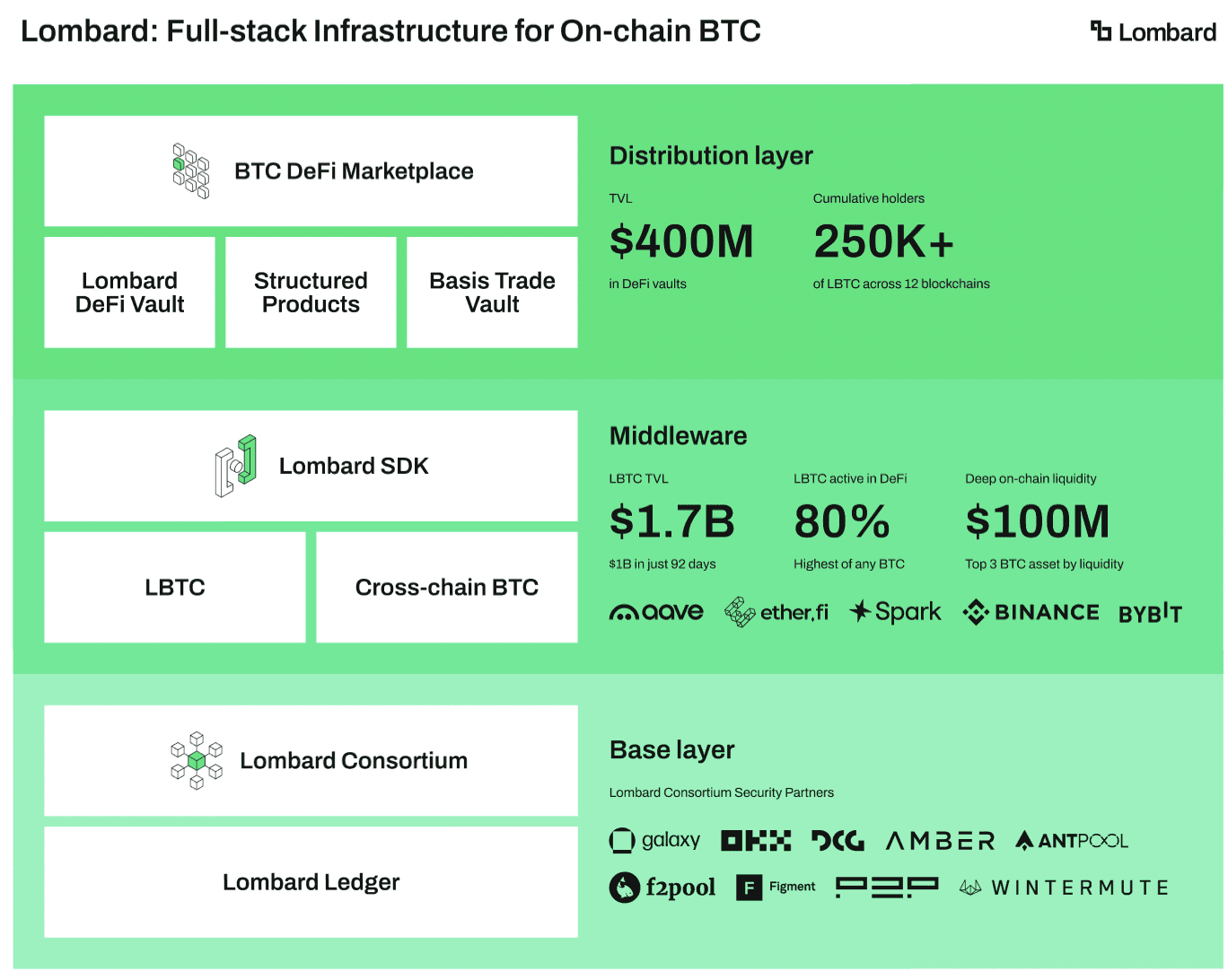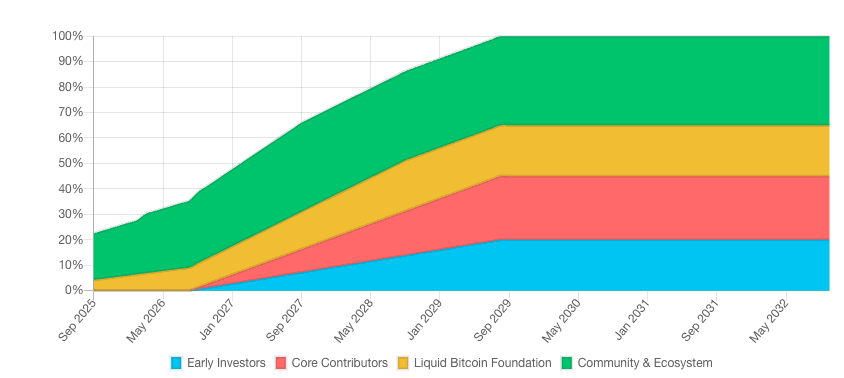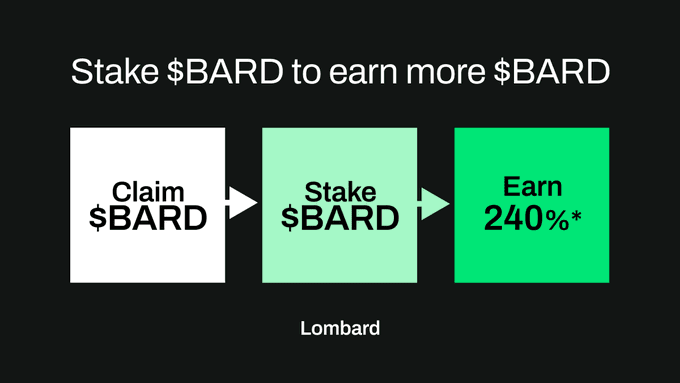Project background and core positioning
The Lombard project was born out of the urgent need for Bitcoin DeFi (Decentralized Finance) ecosystem. As the largest cryptocurrency by market capitalization, Bitcoin has long existed in the form of 'digital gold,' but its participation in the DeFi space is less than 10%, resulting in trillions of dollars in potential liquidity lying dormant. Lombard aims to transform Bitcoin into a composable, yield-bearing on-chain asset through innovative design, intending to become the 'infrastructure layer' of the Bitcoin on-chain economy, similar to the empowering role of CME (Chicago Mercantile Exchange) for commodities and Tether for stablecoins.

Core Innovations
Liquid Staking Token LBTC: After users deposit Bitcoin (BTC), they can mint LBTC at a 1:1 ratio. This token not only retains the value of BTC but also achieves native staking rewards (approximately 1% annualized) through the Babylon protocol, while also having cross-chain liquidity for use in lending, yield farming, and other scenarios in DeFi protocols like Aave and Pendle.
Multi-chain Expansion Strategy: LBTC has been deployed on 12 blockchains including Ethereum, Solana, Base, leveraging Chainlink CCIP and the Symbiotic framework for secure cross-chain transfers, eliminating liquidity fragmentation issues.
Institutional-Level Security Alliance: An alliance composed of 14 top institutions including OKX, Galaxy, and DCG, ensuring the minting and redemption of LBTC through multi-signature and audit mechanisms to avoid single point of failure risks.
Token Model: The economic design and governance mechanism of BARD
Basic Information about the Token
Name: BARD (Lombard Native Token)
Total Supply: 1 billion
Token Type: ERC-20 Utility Governance Token
Initial Circulation: 225 million (22.5% of total supply)
Unlocking Period: The remaining 77.5% of tokens will be released linearly over 48 months to ensure long-term incentive consistency.

Token Distribution and Use
Community and Ecosystem (35%)
Used for airdrops, developer incentives, community activities, etc., to promote ecosystem growth.
For example: Funding Bitcoin DeFi projects through the Liquid Bitcoin Foundation (LBF), promoting LBTC application scenario expansion.
Early Investors (20%)
Lock-up period of 12 months, linear unlocking over 48 months, attracting top institutions like Polychain Capital and Franklin Templeton to participate in the seed round financing ($17 million).
Liquid Bitcoin Foundation (20%)
Responsible for protocol development, partnerships, and ecosystem grants, with funds released linearly over 3 years to ensure governance transparency.
Core Contributors (25%)
Unlocking based on service milestones, starting from the 12th month, incentivizing the team to continue innovating.
Core Functions of the Token
Governance Participation
BARD holders can vote on proposals regarding protocol upgrades, fee structures, integration plans, and directly influence the direction of Lombard's development.
For example: Deciding on adjustments to LBTC staking yield or prioritizing new chain deployments.
Secure Staking
Users staking BARD can ensure the security of the LBTC cross-chain bridge, earning protocol fee shares by validating transactions and preventing attacks.
Mechanism Design: Similar to Proof of Stake (PoS), malicious actors will face penalties (such as reductions in staked tokens).
Utility Incentives
Priority Access: BARD holders can have priority access to Lombard SDK, new feature beta tests, etc.
Fee Discounts: Enjoy reduced gas fees or enhanced yields in scenarios such as staking and trading.
Enhanced Yields: Gain additional token rewards through ecosystem projects funded by LBF.
Ecosystem Development
LBF allocates funds through BARD token distribution to support cross-chain integration, research collaboration, and market education.
For example: Collaborating with MegaETH to develop a real-time Bitcoin blockchain or providing compliant DeFi solutions for Korean institutions.
Economic Model and Sustainability
Revenue Sources
LBTC Staking Yield: A portion of the fees from the staking service of the Babylon protocol.
Treasury Management Fee: Management fees charged on assets stored in the Lombard treasury.
Cross-Chain Transaction Fee: Fees charged for LBTC cross-chain transfers.
SDK Usage Fee: Revenue sharing through integration with exchanges, wallets, and other platforms via Lombard SDK.

Supply and Demand Balance Mechanism
Staking Incentives: Users staking BARD can secure the LBTC bridge and earn protocol fees and additional BARD rewards, increasing token demand.
Ecosystem Expansion: As LBTC adoption in DeFi increases, the value of BARD as a governance and utility token will grow correspondingly.
Buyback Plan: In the future, BARD may be repurchased and burned using protocol revenue, reducing supply.
Project Progress and Market Performance
Milestone Achievements
TVL exceeded $1.5 billion: LBTC reached $1 billion TVL just 92 days after launch, becoming the fastest-growing yield-bearing token.
Institutional Endorsement: Secured $110 million in funding from 17 institutions including Polychain Capital, Binance Labs, and Franklin Templeton.
Community Presale Booms: In September 2025, raised $94.7 million with a $450 million FDV through Buidlpad presale, oversubscribed by 14 times.
Future Roadmap
Three-Phase Development Plan
Phase 1 (Completed): Launch LBTC and establish a secure alliance, achieving on-chain Bitcoin staking.
Phase 2 (In Progress): Build the capital market layer, develop Lombard Ledger (an application chain based on Cosmos) and SDK toolkit, supporting one-click staking and automated treasury.
Phase 3 (Long Term): Become the core infrastructure of the Bitcoin on-chain economy, promoting permissionless Bitcoin derivatives and a global payment network.

Register on Binance with referral code: BITDEER
(Permanent 20% Fee Discount)
Follow me for updates on various project information!
https://www.binance.com/zh-CN/join?ref=BITDEER




